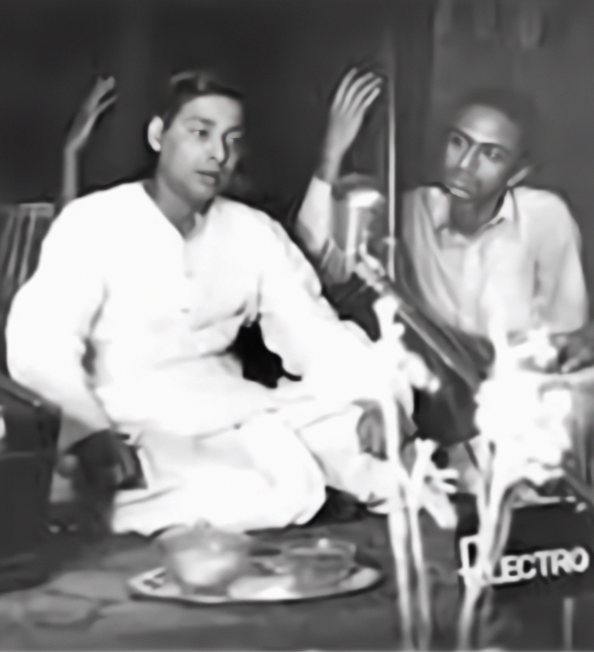
Tarapada Chakraborty (1909 – 1975), hailed as the first Pan-Indian Khayal singer from Bengal, was a pioneering figure in Indian classical music. Alauddin Khan, the guru of Ravi Shankar and Ali Akbar Khan, honored him with the title “The Bengal Tiger of Indian Classical” for his extraordinary talent and resilience.
Born in Kotalipara, now in Bangladesh, Tarapada Chakraborty’s early life mirrored the struggles of his contemporary, Allauddin Khan. He arrived in Kolkata with little more than a passion for classical music, often sleeping on sidewalks and using his voice to fend off eviction by colonial policemen.
Chakraborty hailed from a lineage of eminent Dhrupadiyas. His great-grandfather, Biswambhar Chakraborty, was associated with the Seni Gharana. His father, Kulachandra Chakraborty, and his uncle, Ramchandra Chakraborty, trained under Jahur Khan of the Khurja Gharana, marking the family’s transition towards the Khayal tradition. Ramchandra, notably, served as the Dwarpandit and court musician for the Maharaja of Natore.
As a young aspirant in Kolkata, Tarapada began his formal training under the visually impaired maestro, Satkari Malakar of the Gwalior Gharana. However, his exceptional memory and ability to instantly reproduce complex musical passages led to his dismissal, as teachers of the time were often reluctant to share their entire repertoire.
Undeterred, he continued his training under Girija Shankar Chakrabarty, a renowned teacher and Zamindar who hosted and learned from Ustads and Pandits across various gharanas, including Betia, Agra, Rampur, Gwalior, Jaipur, Bishnupur, and Kirana. This exposure allowed Tarapada to master a diverse range of styles, impressing audiences by adopting different gharana styles during performances.
In addition to his vocal prowess, Tarapada Chakraborty was an accomplished tabla player. His career began at All India Radio, where he accompanied legendary musicians like Enayet Khan, Allauddin Khan, and Hafiz Ali Khan. A serendipitous opportunity to sing during a broadcast marked the beginning of his illustrious career as a vocalist. Even at the height of his fame, fellow musicians often requested him to accompany them on the tabla.
Tarapada Chakraborty is credited with popularizing the 48-beat Ati-Vilambit (extra-slow-tempo) Ektaal Khayal format, developed in collaboration with tabla player, Karamatullah Khan. This innovation inspired Amir Khan to create the 56-beat Jhoomra Khayal. Chakraborty also played a significant role in promoting the Bengali Raagpradhan and Bengali Thumri sub-genres.
One of his notable contributions to Indian classical music is the creation of the raga Chhaya Hindol, a unique interpretation based on Hindol, distinct from any amalgamation of Chhaya and Hindol. Ali Akbar Khan, a close family friend, later composed the raga Hem Hindol, drawing inspiration from this work.
Despite the age difference, Chakraborty shared close friendships with Allauddin Khan and Faiyaz Khan. Their correspondence, filled with mutual respect and affection, offers a glimpse into the camaraderie among the musical greats of that era.
In recognition of his contributions, Tarapada Chakraborty was awarded the Sangeet Natak Akademi Fellowship, India’s highest honor for artists, and the State Academy Award from Rabindra Bharati University in 1972. However, when the Indian government conferred the Padma Shri upon him in 1974, he famously declined it, considering it beneath his stature.
Unfortunately, many of his All India Radio recordings have been lost due to negligence, fueling conspiracy theories about their disappearance. However, some live recordings were recovered during his birth centenary celebration in 2009, organized by PARAMPARIK and the West Bengal Government.
Sangeetacharya Tarapada Chakraborty’s legacy continues to inspire and influence Indian classical music, and his contributions remain a testament to his genius and dedication.
